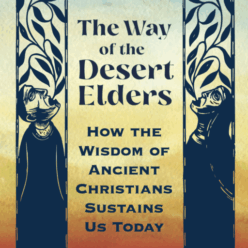
Ah, the minefield of gender issues! Christians love to debate it, or love to hate the debate. Either way, we gawk.
Rachel Held Evans, Donald Miller, and Mark Driscoll have been creating internet whirlpools, social media buzz, and blog traffic as they poke at these issues lately.
Rachel and Mark will launching books on the topic this fall, under the same publisher. Don claims he uses his blog to float book ideas and topics, so he’ll likely take a crack at it too. He’s been asking girls “why they give up sex” (sic.), and guys “why they hook up”, in separate posts, this week. He’s deleted 2 controversial gender-themed posts that he cranked out (his words), also.
Most often this issue is termed (generally) “gender issues” or “gender roles in the church”. We find words like “leadership”, authority”, “power”, “ordination”, “justice”, and “equality” used. A lot.
Here’s the trouble. These decades-old (or worse) labels (i.e. egalitarian, complementarian) don’t work well anymore. The popular writers discussing it right now haven’t tried to leave the worn out and confusing labels behind. We need a new model. We need more accurate descriptions, which is what labels try to do.
But, WHY Label? ugh.
I’m not a big fan of labels in the first place. I find them quite constricting. Yet, even if we don’t like labels, we have to agree that this sort of position makes us an “anti-label person”…this is, obviously, you guessed it, a label. Run everyone, a circular argument!
Categories are limiting and inadequate, and yet they are also necessary. We can’t hope to communicate without them. Keeping that in mind, I don’t want to be under the choke hold of worn out labels, as I enter this “hot topic”.
So, for the sake of discussion and mutual understanding, I’ll start very differently than all the others I’ve seen covering, or dancing around, the topic. I’ll propose some new terms and categories. Innovation moves us forward. Yes, we are living in very exciting times, my friends.
This is what brought me to this point:
In the red corner, we have Rachel Evans. She claims to be an Egalitarian. In the black and blue corner, Mark Driscoll flexes his Octogon man muscles, and puts the smack down on the issue with his version of the Complementarian view of gender roles. Is Donald Miller in the yellow corner? He might assist Rachel in a tag team sort of thing. We shall see.
Where does that leave us? I. don’t. know. But, I’m seeing very little positive progress.
CH- ch-Ch-Chan–ges!
When it comes to these issues, most recognize that change is afoot. Authors are taking it on. People are making statements, and firming up their positions. Still, nobody can really define where we are going, or where we should be.
For instance:
Conservative churches who have women leading ministries rarely dare call these females “ministers” or “pastors”*. Oh, no. They are “directors“. Is this satisfying? What’s going on, here?
I think I can hear some of the inner monologue now…
“Darn those working women of the last 30 years. Things have gotten confusing once we operated on the assumption that women were capable. Why can’t they just stay in line? Hurry, hurry, define what male and female is! The sky is falling.”
DeLayian Thought:
Simply put: I’d like to propose a new term and viewpoint. Let’s try the word and idea of “Capacitarian”. Yes, my friends, a new word for a new time.
If you noticed that the root of this word, I just made up for the purpose of coining it and creating a new term of engagement, is capacity, give yourself 28 points. (It’s like Shrute bucks.)
You want Biblical backing? No problem. It’s based on Paul’s admonitions, no less. That’s right, the big leagues. 1 Corinthians 12-13. More on this later.
(You probably thought I’d go with Jesus being the first Rabbi to have female students, right? Or God allowing the scandalous idea of Jesus’ Resurrection to be validated by females. Nope. Why drag Jesus into this? It’s uncomfortable territory many complementarians aren’t ready for quite yet, anyway.)
The Capacitarian Axis:
Rather than look to gender, the garden of eden, body parts, or middle-eastern morays of 2 millennia ago, to pick up on the conversation (as usual), how about a Kingdom of God vantage point, which, by definition, transcends gender and culture both? See Galatians 3:26-29. It’s so crazy, it just might work. It’s a fresh starting point.
In the next post:
Defining “Capacitarianism”
pronounced: <CAP-pass-it-Tarry-ann-is- uhm>
It’s long overdue to create new and fresh smelling dialogue and definitions for how we operate and cooperate in community and within the church. In the next few posts I (and I hope we) will deal with moving toward a recoup of the way we follow Jesus.
Here’s where you come in.
This is no place to go it alone (I don’t plan to).
Share your thoughts on the issue. Do you feel comfortable with the typical labels that relate to doctrine on gender?
Please, chime in, interact, and contribute to finding a more abundant path–together. A pathway for communion and fellowship with each other, at a better spot, where we don’t use our labels as crutches or bullets. And, a spot where power and agenda isn’t part of the equation. A precious place where we enact and embody the gospel of grace in and through our interactions.
Begin with me, please. Thank you for your help.
–Lisa
Endnote:
*A quick look at the word and context of the word “pastor”, indicates a shepherd vocation. So, a helper, servant, and guide, not a kingpin. Just saying…









